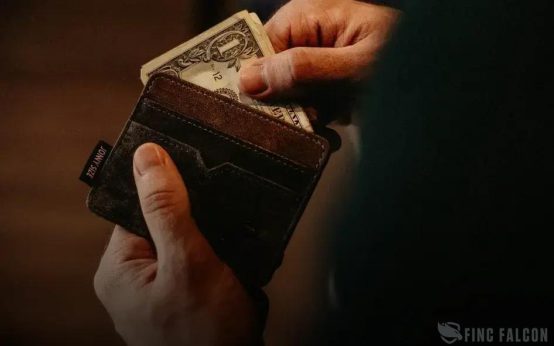Embarking on a no-spend challenge can be a rewarding journey toward financial freedom. By understanding the basics and setting clear goals, you can significantly reduce unnecessary expenses. This guide will walk you through budgeting, finding free alternatives for fun, and effectively tracking your savings. Whether you’re motivated by living simply or boosting your bank balance, these steps will help you succeed.
Understanding the No-Spend Challenge
The No-Spend Challenge is a powerful tool to help improve your financial health and build savings. The core idea is simple: stop spending on non-essential items for a set period, which can range from a few days to even month-long stretches. This period of fiscal discipline can lead to significant financial gains because it cuts out spontaneity in spending.
This challenge involves understanding what constitutes a ‘non-essential’ purchase. This typically includes things like dining out, impulse clothing buys, entertainment expenses, and any luxury items. By focusing only on essential purchases such as groceries, utilities, and necessary transport costs, participants often discover they can save a remarkable amount in a short time.
Participating in a No-Spend Challenge can also shift perspectives on personal consumption habits. It’s surprising how often automatic swipes of a credit card can add up, and this challenge provides an opportunity to reconsider these spending choices. By taking the time to reflect on spending triggers and practicing conscious consumption, many find that they not only save money but also learn valuable lessons about financial independence and conscious living.
It’s crucial to prepare mentally for the challenge by setting realistic expectations and viewing it as a chance to grow rather than a restriction. Many who commit find that it enhances creativity, prompting them to find enjoyment and satisfaction in areas of life that don’t require financial expenditure.
Setting Your Challenge Goals

Clearly defining your goals is a crucial step in your no-spend challenge. Start by identifying specific financial targets that you want to reach. Determine how much you’d like to save by the end of the challenge. This concrete number will keep you motivated and provide a clear path.
Next, consider the timeline for your challenge. Will it last a week, a month, or longer? Having a start and end date will give you a sense of urgency and commitment. It’s essential to stay realistic with your goals; setting unattainably high expectations might set you up for disappointment and frustration.
It may be helpful to break down your ultimate objective into smaller, manageable milestones. Reward yourself (without spending) for reaching these milestones to maintain momentum. Communicate your goals to a friend or family member to create accountability. This social support can be invaluable.
Reflect on personal habits or expenses that frequently disrupt your savings plan. Addressing these behaviors is crucial to setting achievable and personalized challenge goals. Tailor your goals to ensure they address such factors and contribute effectively to your financial health.
Creating a Budget to Stick To
Creating a budget that you can stick to is crucial when embarking on a no-spend challenge. It’s not just about listing your expenses but also about understanding your spending habits. Start by making a list of your fixed expenses such as rent, utilities, and loans. These are your non-negotiables and should be prioritized.
Next, look at your variable expenses like groceries and transportation. Here is where you can find room to adjust and optimize your spending. Set realistic limits for these categories based on your past spending data. Make use of budget apps that connect directly to your bank accounts, providing a seamless way to track your expenses.
Consider adopting the 50/30/20 rule as a guideline. Allocate 50% of your income to necessities, 30% to wants, and 20% to savings. During your no-spend challenge, the ‘wants’ category should be minimized as much as possible. This method helps to create financial discipline while allowing small joys without completely cutting them off.
Take a moment to review your budget weekly. This practice helps you adjust quickly to any overspending and keeps the challenge on track. Additionally, setting milestones can motivate you. For instance, celebrate staying under budget for a consecutive week with a non-monetary reward.
Your budget is a living document, meant to evolve with your needs and goals. It guides you during the no-spend challenge, ensuring you stay committed while working towards a healthier financial future.
Finding Free Alternatives for Entertainment

Finding free alternatives for entertainment is a key aspect of succeeding in a no-spend challenge. During this period, you need to find creative ways to enjoy your time without spending money. Here are some ideas:
- Explore Local Parks: Many communities offer beautiful parks and recreational areas that are perfect for leisure activities like hiking, picnicking, or simply enjoying the outdoors.
- Attend Free Community Events: Check local community boards or social media pages for free events in your area, like concerts, festivals, or workshops.
-
Maximize Library Resources
: Libraries are a fantastic source of free entertainment. You can borrow books, movies, or participate in library-hosted events and classes.
-
Embrace the Arts at Home
: Engage in creative hobbies such as painting, drawing, or crafting using materials you already have at home.
- Organize Game Nights: Invite friends over for a game night. Playing board games or card games is a fun and free way to socialize.
- Enjoy Digital Content Platforms: Many online platforms offer free courses, documentaries, and lectures that can be both entertaining and educational.
- Plan a Museum or Zoo Day: Many museums and zoos offer free admission days, making it a perfect outing spot on a budget.
By embracing these ideas, you can make the most out of your no-spend challenge, maintaining a fulfilling lifestyle without financial outlay.
Tracking Your Savings and Progress
To make a significant impact with your no-spend challenge, track your savings progress closely. Start by creating a simple spreadsheet or use an app to log every dollar saved. This will not only keep you motivated but also allow you to analyze where you spend the most. Consider creating visual tools like graphs or charts that show your savings over time. This creates a tangible reminder of your progress and can encourage continued discipline.
It’s crucial to review your spending habits during this period. By comparing your spending from before and during the challenge, you’ll identify new habits that can contribute to long-term financial health. If certain expenses are recurring, consider setting up an alert system or reminders to help stay on track.
Additionally, try setting small goals throughout the challenge. Celebrating these milestones can keep you engaged and committed to your savings journey. Regularly update your family or a friend about your progress for added accountability and support. Remember, the objective is not just to save money temporarily but to cultivate savvy spending patterns for the future.





